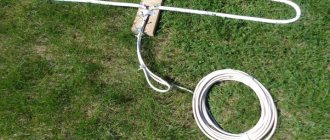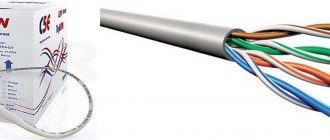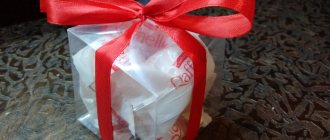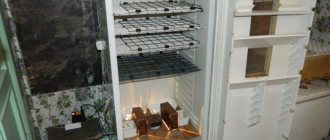As a result of the fact that mobile devices have become an integral part of the lives of many car enthusiasts, users on the Internet are often interested in what an AUX output is and how to make it. This article will focus on this issue. How to connect the AUX cable for a car radio, how to make the corresponding output and what is required for this - find out below.
What is an AUX output on a radio?
So, what is AUX, how to make it and connect it? First, let's understand the concept. AUX is an input designed to connect an audio source. This can be a regular MP3 player, mobile phone, tablet connected via an appropriate cable. In fact, when the player is connected, the driver will be able to listen to audio recordings through the car radio, as if through an amplifier.
Connecting an MP3 player to a car radio via the AUX input
In this case, a pulse with an amplitude that is within the parameters from 0.5 to 1 volt will be sent to the linear input. Any audio playback device that is equipped with an appropriate output can produce a similar impulse. As for the output specifically, it is usually marked as AUX OUT or CD OUT (which is much less common).
Today, many car enthusiasts use special tuners that connect through the cigarette lighter and allow them to listen to music through a flash drive. At the same time, these people claim that a tuner connected via the cigarette lighter is an excellent alternative to connecting the player via AUX. We want to say right away that the quality of playback of audio files is fundamentally different - connect it yourself and you will understand it. When connected correctly, the AUX output will produce much higher quality sound than a regular Chinese tuner.
Connected storage medium to the car radio
Why is this convenient?
- The technical functions of conventional radio tape recorders are significantly expanded.
- You can listen not only to your favorite music, but also broadcasts from virtual radio stations.
- Additional connection of absolutely any external devices is possible.
- No financial investment is required to update built-in car audio systems.
- Broadcasting sound through a phone connected to the AUX input will be no worse than the quality of played music from a flash drive or disk.
Manufacturing Guide
We’ve figured out what AUX is, now let’s move on to the issue of manufacturing the device. To make AUX into a standard radio, you will need to perform certain steps, having prepared all the necessary materials in advance. In principle, the procedure for connecting this output is not particularly complicated, but in order to carry out all the steps correctly, you must follow certain nuances, which you will learn about later. If you have any doubts about whether you will do everything correctly, we recommend that you seek help from a qualified electrician.
Basic recommendations, as well as an approximate diagram of connecting wires to the radio board, are shown in the video from the SRV channel below.
Tools and materials
So, if you want to always be able to connect an MP3 player via cable through your car radio, you will need to equip the appropriate input. To perform all the steps correctly, prepare the necessary input plug and cable in advance. In principle, all this can be taken from old headphones; in this case, it is very important that their input cable is intact. You can make sure that the input cable is intact by “ringing” it, using a multimeter for this.
Regarding the input plug, there are certain points to consider. For example, the usual standard plug from any audio headphones is conditionally divided into several parts. The widest part of the plug, located at the plastic base, belongs to the common cable. This cable is painted in a common color, and the conductors of the two channels - left and right - are marked in green and red. This means that the two parts that remain relate specifically to the playback channels.
In principle, there is nothing complicated to build an AUX input with your own hands. You only need to prepare a certain set of devices:
- the headphone plug itself with the cable;
- soldering iron with consumables;
- multimeter
Stages
So, when all the necessary tools and materials have been collected, you can begin making an input designed to connect the player through a car radio.
To do everything correctly and so that you can easily connect any mobile device, including a player, via a cable to the car radio, follow these steps:
- First, remove all media from your car radio. Once everything is removed, you will need to remove the audio system. To do this, you will need to remove the decorative plastic trim, which is usually secured with several plastic clips. As a rule, car enthusiasts do not have problems at this step. But if your car radio is obsolete (or rather, “ancient”), there is a chance that you will also need to unscrew a few bolts. One way or another, this stage usually does not cause difficulties, so be guided by the situation.
- After the car radio is removed, you will need to unscrew several screws located on the ventilation panel. This panel will subsequently need to be lifted up a little - this action will allow you to get rid of interference in the future.
- We can say that the preparatory stage of producing the input for connecting the player to the radio via a cable has been completed. Now you need to connect all the cables that you took from the old headphones along with the plug to the PCA output, that is, the tulip.
- To properly solder all the cables, you must follow a certain order. In particular, the common cable should be soldered to the metal base of the connector. Conductors that are used as channels should be soldered to the middle pins.
- After you have soldered all the necessary wires using a soldering iron, you need to test them; for this, as mentioned earlier, a multimeter is used. If there are problems, the procedure must be repeated.
- When you are sure that everything is done correctly, the soldered wires along with the plug will need to be brought out. So that they are located in the cabin and a player or other device can be connected to them. In this case, you need to be based on your preferences, as well as the design features of the center console of your vehicle. After all, you need to make sure that connecting and using a player or mobile gadget via a cable does not cause discomfort or difficulty. As practice shows, the most optimal solution in this case would be to lead the cable into the ashtray, of course, if it is not used for its intended purpose. You need to make sure in advance that the cable through which you will connect mobile gadgets or players is long enough. Otherwise, the connected device will simply hang under the radio, and this, you see, is not very aesthetically pleasing. More detailed instructions for connecting this output are given in the video below (the author of the video is comPlushki Repairs and Arduino).
AUX-USB adapter
This is a regular cable with different plugs at the ends. You can buy it in the same place as Mini Jack. The only thing you need to look at is the USB port. It can be different:
- Type A (USB 3.0, blue inside) - it can be seen on the wires for connecting a computer mouse, keyboard, printer, chargers.
- Type B - previously used to connect printers, but today it is practically not used, giving way to the variety described above.
- Mini USB (USB 2.0) is a smaller connector; it can be seen, for example, on digital cameras and some gadgets.
- Micro USB is a standard connector used in almost all mobile phones.
All you have to do is find out what standard socket your gadget has and buy a wire with the appropriate plug.
Video “How to connect an AUX output to a car radio with your own hands”
More detailed and visual instructions for connecting the AUX output to a car radio with a CD drive are given in the video below (video author - SoftMan).
Not everyone has a soldering iron these days. But almost everyone has headphones, and even more than one. And as everyone knows, any headphones tend to die... And as always, at the wrong time. So today we will get out and you will learn how to fix headphones without a soldering iron. tools you need are a knife, a lighter and tape.











